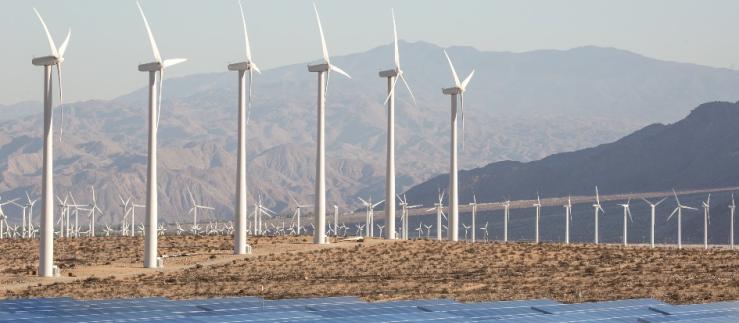Hydrogen and biogas were two key engines of investment growth this past year. Innovations in production, distribution, and end use have benefited from the fuel anxieties that consumers are facing. Some key deals from 2022 include:
- Monolith Materials (US), a technology for plasma pyrolysis of turquoise hydrogen raised a $300 million growth equity round
- Electric Hydrogen (US), an innovator in novel electrolyzers, raised a $198 million growth equity round
- EH Engineering Group (Switzerland), lightweight fuel cells innovator, raised a >$5 million seed round from AP Ventures.
Importantly, investors began putting more faith in innovators that are seeking to decarbonize the long-distance shipping and logistics sectors. By 2050, shipping is predicted to require a volume of low-carbon fuels in the energy mix comparable to the total amount of all fuels used in shipping today. Likewise, recent predictions are that hydrogen and electrification will have very limited potential to decarbonize aviation, and sustainable aviation fuel (SAF) enhanced fuels will comprise over 60% of aviation energy by 2050. Some signals that innovations in these fuels are becoming less risky include:
- Amogy (US), who is developing systems that use ammonia as a fuel, raised $46 million in 2022.
- Swiss innovator Destinus, who is developing hydrogen-powered cargo hyperplanes that can reach supersonic speeds, raised a $29 million seed round
- Lanzajet (US) will now be able to serve the market with their alcohol-to-jet fuel solutions, thanks to a $50 million Breakthrough Energy Catalyst Program grant to build a production facility in Georgia, US, and $50 million growth equity round from the Microsoft Climate Innovation Fund.
Supply Anxieties are Demand-reduction Opportunities
Technologies for energy efficiency, command-and-control, and grid flexibility have been in the market for years, but saw an especially precipitous rise in interest this year with global energy price volatility. Grid flexibility in the form of more intelligent home storage combined with bi-directional EV charging and sophisticated software layered on top of hardware systems accelerated this past year. Some notable deals include:
- Lunar Energy (US), founded by a former Tesla head of energy, came out of stealth mode raising $300 million from SK Group , Sunrun , ITOCHU , Honda Motor Co, and in short order acquired Moixa, a UK-based intelligent battery company.
- German home energy management and grid flexibility company 1Komma5 raised over $215 million through multiple rounds in 2022.
- Swiss distributed energy resource management system innovator Depsys was acquired by UK-based grid flexibility technology company Krakenflex.
Reinvigorating the Built Environment for a Net Zero World
An estimated 30% of global energy consumption and 15% of CO2 emissions come from building-related emissions. As more nations require emissions reduction and thousands of corporations make public net zero pledges, decarbonizing real estate portfolios is likely to be the first stop for many companies under pressure to make net zero progress.
Up to 35-40% of building-related emissions comes just from heating and cooling, mostly HVAC. Although there are building performance requirements in many countries (e.g. the EU Energy Performance of Buildings Directive), by 2100 the global population exposed to deadly heat conditions is projected to grow by 50% - 75%, meaning that heating & cooling systems must perform better while also consuming less energy.
The ubiquity of low-cost sensors, 5G, cloud computing, and accessible AI and machine learning have created a dynamic where mass digitalization is possible even for “dumb” buildings. This trend was on full display in 2022, key investments included:
- Turntide Technologies (US) offers a novel electric motor and motor controller that can be retrofitted into HVAC equipment and self-optimize for maximum component-level efficiency. Turntide has raised over $300 million in the past 18 months, and has expanded out in buildings to offer a full cloud solution for building management as well as making acquisitions and launching new technology for electric mobility and agriculture.
- Blue Frontier (US) raised a $20 million Series A this summer to accelerate development of a liquid desiccant energy storage system. The Blue Frontier technology stores energy through a liquid desiccant dehumidification process when energy is cheapest or cleanest and deploys when needed, with potential to save up to 90% of a rooftop unit’s energy use.
- Swiss district heating company Exergo raised a $3 million seed round from Baker Hughes and Eren Groupe
- Askelos, a Swiss Innovator in predictive physics-based digital twins for the management of large energy assets, raised a $16.5 million seed round, including participation from Future Energy Ventures, Japan Energy Fund, and Shell Ventures
“Enabling Technologies” critical to next-generation supply chain sustainability
From geospatial imagery to sensors to digital logistics software, enabling technologies this year has focused on streamlining supply chain efficiency. The great global supply chain disruption brought on by the COVID-19 pandemic sparked demand in a market that innovators have pounced on with technologies seeking to course correct based on the lessons learned. Geospatial data provides real-time visibility of the supply chain, offering an overview of areas that corporates can address quickly and accurately while sensors aid information transparency on the cloud. Some notable deals from this year include:
- Nexxiot, a Swiss developer of ultra-low power consumption smart sensor modules, cloud infrastructure and a connectivity platform for supply chain tracking, raised over $75 million in growth equity this past summer. These funds will be used to create an Internet of Things retrofit for the rail freight industry.
- Lausanne-based innovator, Picterra is a platform developer that connects the raw data from satellite, drone, and aerial imagery providers, and the domain experts who deliver geospatial services and advisory to their clients. The company closed a $6.5 million Series A round from VI Partners and Ace & Company.
- Tive (US) secured $54 million in Series B funding this spring to expand internationally, grow sales and marketing operations and develop its next-generation sensor solutions for supply chain intelligence.
- Aerospacelab (Belgium), a vertically integrated company that designs, manufactures, tests and operates satellites and sensors raised over $43 million in Series B funding to ramp up satellite production capacity, deploy multiple constellations to establish an intra-daily monitoring of the Earth’s surface and implement geospatial data fusion analytics capabilities.







